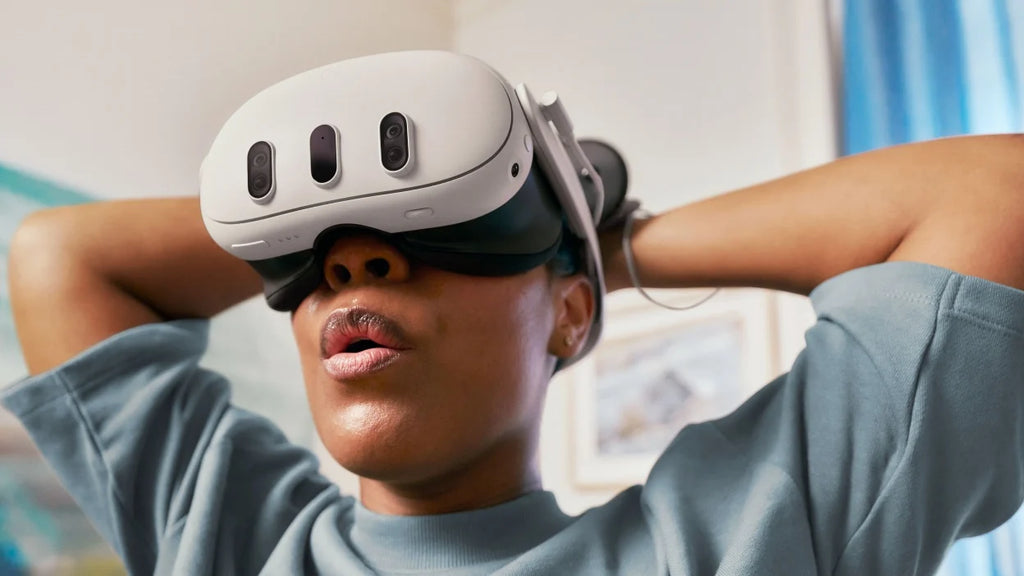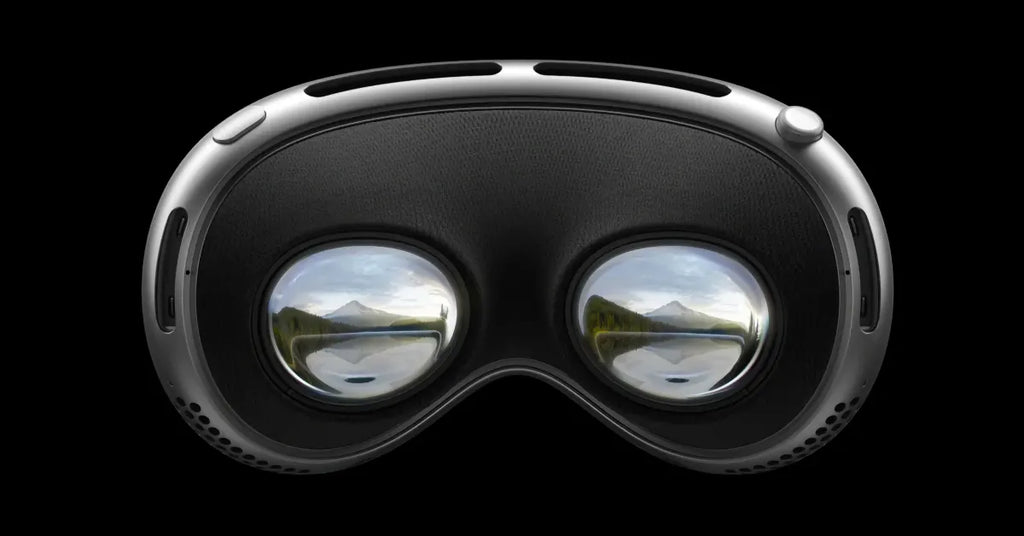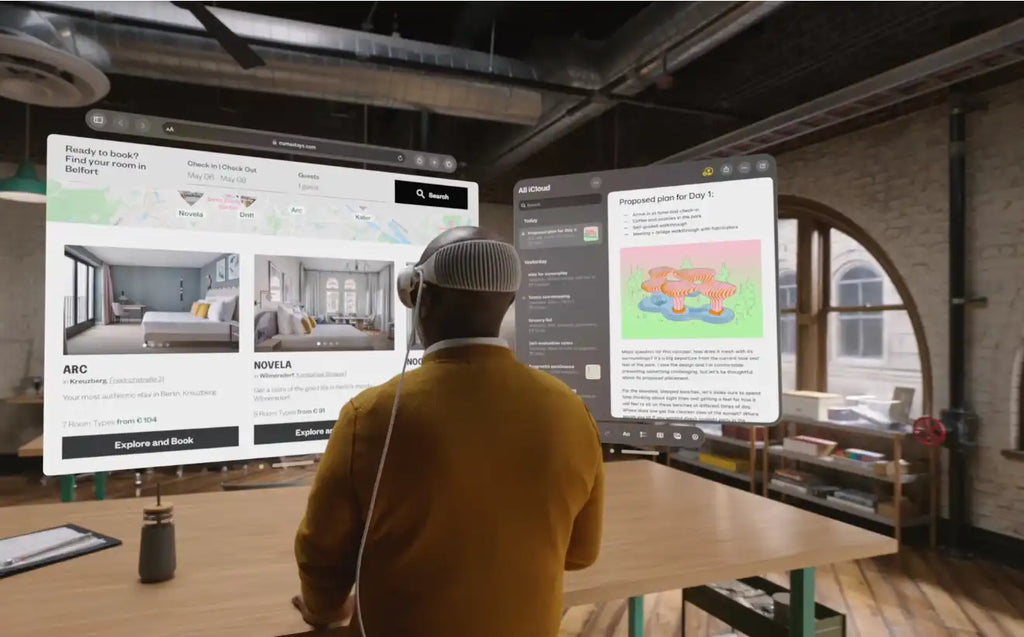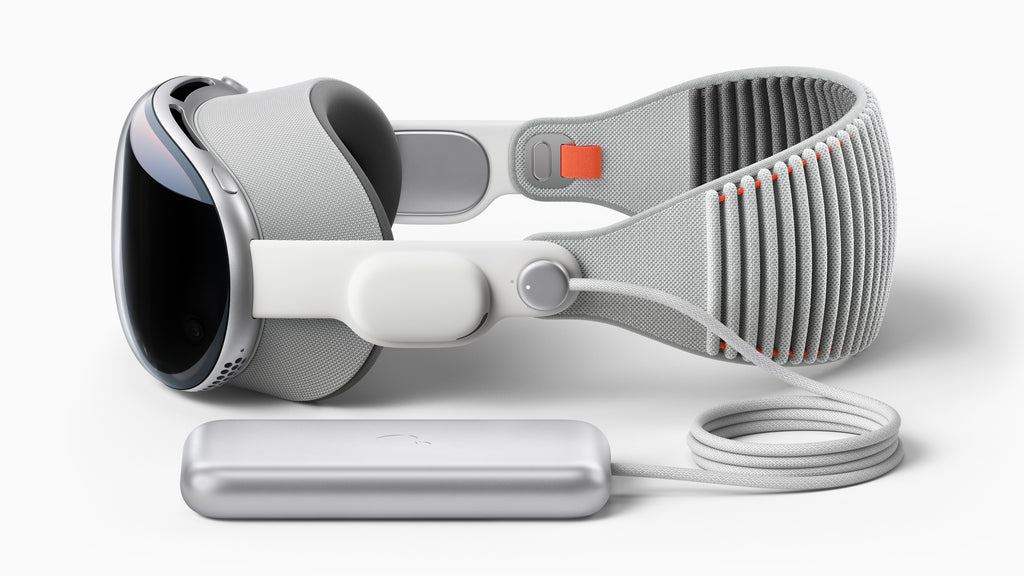Buying a VR Headset? Apple Vision Pro vs Meta Quest 3 Comparison

With more players in the mix, the world of virtual and mixed reality headsets is more exciting than ever. Apple has entered the arena with its premium Apple Vision Pro, while Meta continues to refine its affordable Meta Quest lineup. But which one is right for you? Here’s an in-depth comparison of the key similarities and differences.
Design
The Apple Vision Pro features a sleek curved visor with anodized aluminum housing and laminated glass exterior. It has a digital crown dial for toggling between immersive (VR) and mixed reality modes. With premium materials and intricate design details, it matches the typically high-end Apple aesthetic.
The Meta Quest 3 utilizes a white plastic body with a default fabric Y-shaped headband and spacers in the back. While more functional than stylish in looks, the Quest 3 is lighter weight and more engineered for movement and activity.
Display Quality & Capabilities
Apple has packed its Vision Pro with cutting-edge micro-OLED displays having approximately 3660 x 3142 pixels per eye. That's extremely high resolution that surpasses 4K quality. The headsets also support refresh rates up to 100Hz for smooth, comfortable viewing.
But Apple goes beyond just resolution. The Vision Pro utilizes sophisticated technologies like variable focus, spatial mapping and EyeSight auto adjustments (explained more below) to enable maximum visual accuracy and comfort, especially in mixed reality modes.
Variable focus means the lenses can shift from sharp to blurry imaging just like the human eye. This gives a truer sense of depth when viewing both nearby and faraway objects.
Spatial mapping utilizes the array of external cameras to dynamically scan and construct a 3D mesh of your environment. This lets virtual objects seem to fit and interact more convincingly within real room spaces.
Finally EyeSight auto adjustments use eye-tracking cameras to automatically set the best lens spacing and display settings customized per user upon initial setup.
In comparison, the Meta Quest 3's displays offer 2064 x 2208 pixels per eye on LCD panels with a max 120Hz refresh rate. While quite sharp, the LCD technology shows some light bleed and doesn't render deep blacks as nicely as the micro-OLED alternative.
Nonetheless, smooth frame rates aid comfort in long VR sessions too. Meta further enhances graphics via technologies like fixed foveated rendering that sharpen visuals in your center gaze while reducing peripheral imagery.
While the Quest 3's visuals and displays prioritize VR gaming and entertainment over productivity, they still provide a decent window into VR, especially at this accessible price point.
Performance
The Apple Vision Pro packs serious processing power via Apple's latest M2 chip (also used in MacBooks) plus a custom Apple Reality Processor. This enables seamless integration within Apple's ecosystem for smooth performance across applications, OS, and experiences.
The Meta Quest 3 is outfitted with a cutting-edge Snapdragon XR2 Gen 2 chip optimized specifically for VR and mixed reality rendering. While not as robust for general computing, it's extremely capable at delivering expansive, fast-loading VR landscapes and experiences with minimal latency.
Battery Life
The Apple Vision Pro offers up to 2 hours of general use before needing to be recharged. However, it relies on an external battery pack that must be carried separately. The device can be used all day when tethered to a power source like a wall outlet.
In contrast, the Meta Quest 3 builds the internal battery right into the headset itself for truly untethered use. It provides approximately 2-3 hours of battery life on average, whether you are gaming, using productivity apps, or watching media. The Quest 3 can also be directly plugged into a wall outlet for infinite use, and many 3rd party battery strap accessories exist for the Quest.
Experience
Apple is marketing the Vision Pro as a multipurpose AR/VR headset – a jack-of-all-trades suited for work, media, light gaming, and visually-rich applications. Unique experiences blending physical and virtual worlds in new ways aim to set it apart from traditional VR.
The Meta Quest 3 focuses foremost on best-in-class VR gaming, social connection and collaborative experiences fueled by the continually expanding Oculus content library. While capable of basic productivity, entertainment remains the main draw.
In the end, it comes down personal preferences and budget. The $3500+ Apple Vision Pro is ideal for early adopters who want a premium device with versatile functionality, top-tier displays and a stylish exterior they can integrate into daily life.
On a budget under $500? The Meta Quest 3 grants access to the largest ecosystem of VR games and entertainment. It can spice up your usual routine with out-of-this-world virtual adventures or be your workout partner. For most bang per buck, it can’t be beaten.
Before taking the plunge, ask yourself the following:What will you primarily use it for?
If gaming, the Meta Quest 3 and its much larger content library is likely the better option. For productivity and media, the Vision Pro has the edge.
How much does display quality matter?
The Apple Vision Pro touts best-in-class displays, while the Quest 3 trails slightly behind in pixels and use of LCD versus OLED screens.
Do you value mobile use or cross-device connectivity more?
The all-in-one, portable Quest 3 doesn’t need to be tethered to anything. But the Vision Pro seamlessly pairs with your Apple devices.
Is your eyesight compatible with either headset?
The Quest 3 is glasses-friendly, while Vision Pro requires custom prescription lens inserts. However, those needing vision correction can turn to solutions like VR Wave's lens inserts for the Quest 3 and for the Apple Vision Pro. They offer custom-made prescription lenses that magnetically attach to the headsets - adjustable focus rather than fixed. You can also add on blue light filtering for eye protection or anti glare coatings. For those already wearing glasses, the adaptable VR Wave lenses are more comfortable and practical than trying to squeeze your existing eyewear into the headsets. Now both Meta and Apple headset owners can enjoy sharp, unencumbered views inside their virtual worlds.
How tight is your budget?
You can get started in quality VR for just $500 with the Quest 3, while the Vision Pro demands a $3500 premium price tag reflecting its luxe design.
Do you plan on using it for fitness?
The Quest 3 is ideal for active VR games and workouts. Overheating concerns may limit fitness uses for the Vision Pro.
---
When it comes to purchasing one of these advanced headsets, focus on your key priorities. Those wanting the highest fidelity experiences with premium design should go for the Apple Vision Pro. Its technical capabilities stretch far beyond gaming into media, productivity and more - albeit at luxury pricing.
On the other hand, VR gaming and entertainment enthusiasts need not spend big on the Vision Pro. The Quest 3 provides excellent access to new worlds at just a fraction of the cost. You still get solid displays and performance too.
Of course these products just scratch the surface of what interactive virtual and mixed reality could become. But they give consumers a choice catering to different preferences. One thing is certain - spatial computing marks a monumental shift in how we may create, socialize and consume information in the future. Both the Vision Pro and Quest 3 offer an exciting entry point into those possibilities today.


